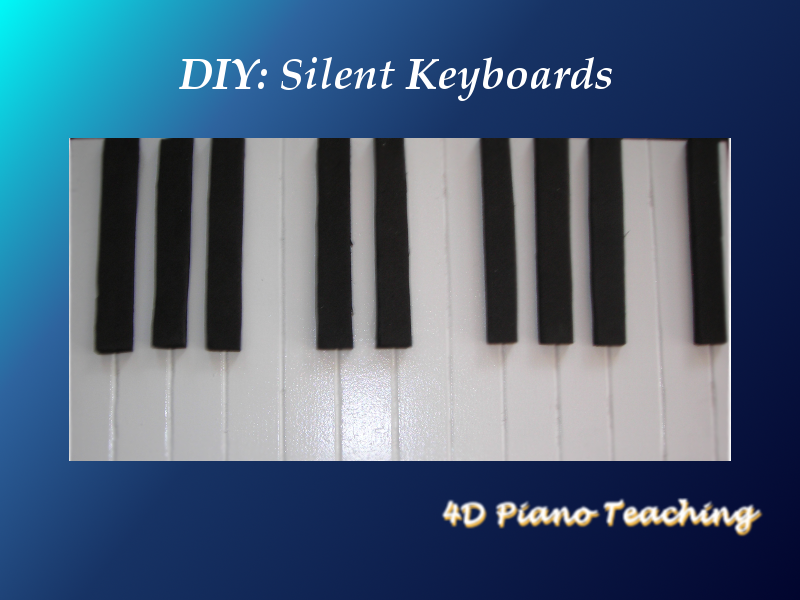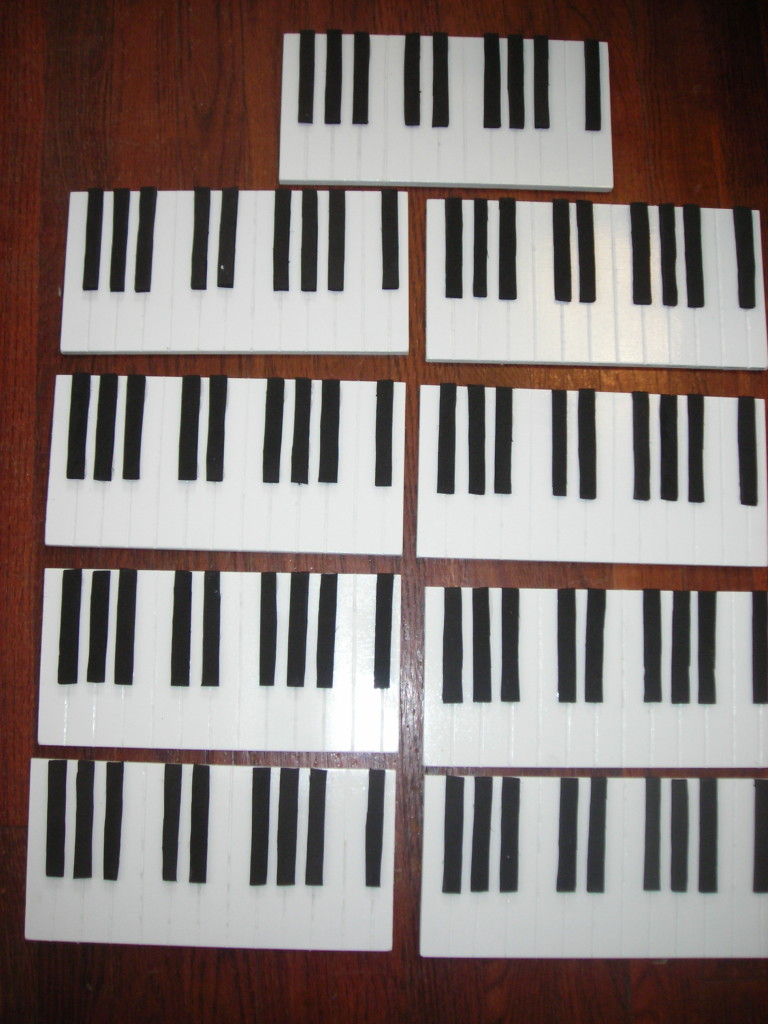 I am so excited about these silent keyboards I just completed. I made a set of nine that I am looking forward to using in group classes and summer camps in the future. I was inspired by Joy Morin’s post at colorinmypiano.com. I loved the idea of making a set of silent keyboards, but really wanted mine to be closer to actual size. I am hoping that I can use them in adult RMM classes as well, so I didn’t want them to seem childish.
I am so excited about these silent keyboards I just completed. I made a set of nine that I am looking forward to using in group classes and summer camps in the future. I was inspired by Joy Morin’s post at colorinmypiano.com. I loved the idea of making a set of silent keyboards, but really wanted mine to be closer to actual size. I am hoping that I can use them in adult RMM classes as well, so I didn’t want them to seem childish.
I found some craft wood at the hardware store that was 3/8 x 6 x 36 and bought three of these. Luckily, I have a handy husband who was able to cut them into three sections each, making a total of 9 keyboards. The boards were about 5 dollars each, so $15 total for the wood. Once we had them cut to the right length, I measure and marked out the keys on each board. The next part took awhile, but I think it was worth it. We filed/scraped away at each line between to keys to create an indention. This way you can feel the edges of the keys, just like on a real piano. Once the filing was done, I spray-painted them all white. I used a high gloss, ultra cover paint and it took many coats to get a true bright white. I used two cans of spray paint, but I loved how they turned out.
Then, as Joy suggested, I used extra thick craft foam for the black keys. I measured from the piano and cut each key to match. I glued them on with “Weldbond Glue” which claims to bond anything. It sure does seem to hold well. Then my keyboards were complete! Here are some of the tools I used to make the key indentions, along with the glue I used:
And here’s some pictures of the finished product:
 Perfect for practicing 5-finger patterns
Perfect for practicing 5-finger patterns
(look at that collapsed nail joint! I was trying to pose with my LH and take pictures with my RH)
 Size comparison to a real piano. Pretty close, just not quite as deep.
Size comparison to a real piano. Pretty close, just not quite as deep.
 A set of 9 beautiful silent keyboards!
A set of 9 beautiful silent keyboards!
Author: Spring
Spring Seals, NCTM, teaches 60 piano students ranging from age 3 to 70 in Fort Worth, Texas. She also serves as the Director of Certification for TMTA. She is passionate about helping teachers become more effective in their studios through professional development, new resources, and fresh ideas.


Such a cool DIY project Spring! Love the pictures too.